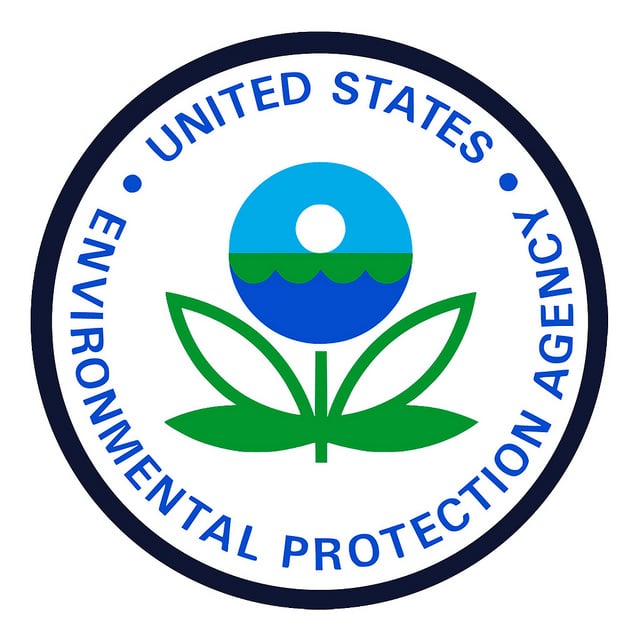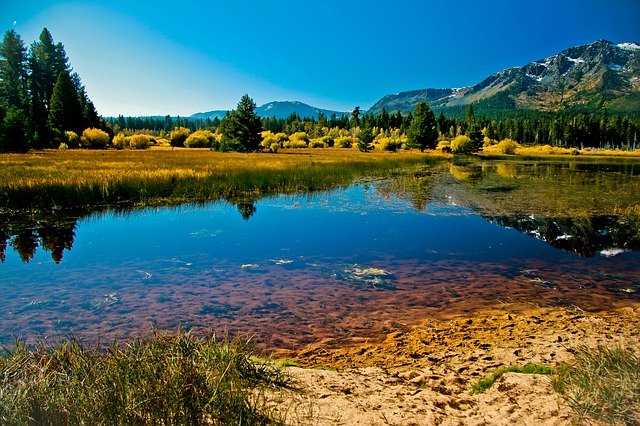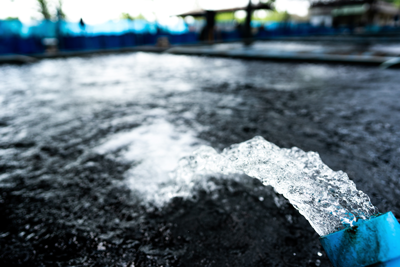Since returning to office in January, President Trump and his administration have promulgated many actions to reduce and revamp the US federal government, and additional actions focused on specific agencies. I wrote about general approaches to environmental regulation HERE. In addition, The Environmental Protection Agency (EPA) has been a target of specific directives, and new EPA administrator Lee Zeldin has already announced important policy and procedural changes at his agency. The remainder of this note summarizes EPA-specific changes ordered and/or instituted as of the end of February 2025.
Read MoreAudit, Compliance and Risk Blog
Trump administration reworking the Environmental Protection Agency
Posted by Jon Elliott on Tue, Mar 04, 2025
Tags: EPA, tsca, clean water, Executive Order, Clean Air Act, environmental protection, Environmental Compliance, Trump, Trump Administration, Environmental Protection Agency
EPA and Corps of Engineers redefine “Waters of the United States” in response to Supreme Court
Posted by Jon Elliott on Tue, Sep 19, 2023
On September 8, 2023, the US Environmental Protection Agency (EPA) and US Army Corps of Engineers (Corps) adopted revised definitions of “waters of the United States” (WOTUS) which is a critical but undefined term in the Clean Water Act (CWA). As I’ve discussed repeatedly, the agencies, potentially regulated entities, and others have disputed possible definitions for decades. Most recently, in May 2023 the US Supreme Court adjusted its own precedent to over-rule definitions adopted by EPA and the Corps in January 2023 (I discussed the January rules HERE, and the Supreme Court decision (Sackett v. EPA) HERE). The rest of this note identifies the newest regulatory (re)definitions, adopted to conform the agencies’ regulations to the latest Supreme Court guidance restricting the types of wetlands potentially considered to be WOTUS subject to CWA regulation.
Read MoreTags: EPA, clean water, CWA, Clear water, water pollutants, environmental law, water, WOTUS
EPA progress reducing Clean Water Act significant non-compliance
Posted by Jon Elliott on Thu, Dec 08, 2022
On November 22, the US Environmental Protection Agency (EPA) announced the success of its ongoing National Compliance Initiative for “Reducing Significant Non-Compliance (SNC) with NPDES Permits,” addressing high levels of non-compliance with individual permits to discharge water pollutants under the Clean Water Act’s (CWA’s) National Pollutant Discharge Elimination system (NPDES). EPA started the Initiative in fiscal year (FY) 2018, in cooperation with delegated state water quality agencies, after compiling and evaluating permit holders’ data showing significant non-compliance by over 20% of the 46,000 permitted facilities around the country. The Initiative’s goal has been to cut non-compliance in half by the end of FY 2022. EPA’s November 22 report claims that this goal has been exceeded, with significant non-compliance rates down to 9%.
Read More
Tags: EPA, clean water, CWA, Clear water, NPDES, water pollutants, water, SNC
EPA and Corps of Engineers propose another re-definition of “Waters of the United States”
Posted by Jon Elliott on Mon, Jan 03, 2022
The Clean Water Act (CWA) empowers federal agencies to regulate activities that may affect “waters of the United States”—sometimes called “navigable waters.” These activities include water quality planning and discharge regulation by the US Environmental Protection Agency (EPA) and delegated states, and regulation of projects that may lead to “dredge and fill” of waters, requiring permits from the US Army Corps of Engineers (Corps).
However, CWA does not define this critical term. For many years, agencies used regulatory definitions jointly developed by EPA and the Corps in rules that date primarily from 1986, which included ambiguities that increased agency discretion but also frustrated landowner aspirations in some cases. However, beginning in 2001 a series of decisions by the US Supreme Court frayed the expansive edges of the regulators’ interpretations. First, in Solid Waste Agency of Northern Cook County v. U.S. Army Corps of Engineers (SWANCC), the Court ruled that the Corps lacks jurisdiction over “isolated” waters and wetlands that are not “adjacent” to navigable waters—such as “prairie potholes,” mudflats, and freshwater seasonal ponds. Then, in Rapanos v. United States, the Court ruled in 2006 that the Corps can exert jurisdiction over non-adjacent wetlands where there is a “significant nexus” between the wetlands and navigable waters (in addition, the wetlands must be at least “relatively permanent”).
Read MoreTags: EPA, clean water, Environment, PCBs, Wetlands, waters, water
EPA Revises Multi-Sector General Permit For Industrial Stormwater Discharges
Posted by Jon Elliott on Wed, May 05, 2021
Effective March 1, 2021, the Environmental Protection Agency (EPA) has issued a revised “National Pollutant Discharge Elimination System (NPDES) Multi-Sector General Permit for Discharges from industrial Activities” (MSGP).” This new 2021 MSGP replaces EPA’s 2015 MSGP (which expired in 2020 but was continued by administrative fiat). Compliance begins May 30, 2021 for facilities that have been subject to the 2015 MSGP. Even though EPA's direct permit authority applies only in limited parts of the country, the new MSGP provides a reminder to organizations nationwide that stormwater management efforts need to be thorough and up-to-date.
Read More
Tags: EPA, Stormwater, clean water, NPDES, Environment, MSGP
Supreme Court decision provides Superfund Responsible Parties with some relief
Posted by Jon Elliott on Mon, Jul 27, 2020
Forty years ago, the federal “Superfund” law -- Comprehensive Environmental Response, Compensation, and Liability Act of 1980 (CERCLA) – was enacted to provide legal requirements and procedural methodologies to speed identification and cleanup of contamination. Today, cleanups continue and the requirements and procedures continue to evolve. In April, the United States Supreme Court issued its latest decision interpreting a Superfund provision, this one defining clearer limitations on when the owners of contaminated land can force Responsible Parties for that contamination to pay for cleanup more extensive (and expensive) than cleanup ordered by the Environmental Protection Agency (EPA). The case is Atlantic Richfield Company v. Christian.
Read MoreTags: EPA, RCRA, clean water, Supreme Court, Superfund law, CERCLA, The Montana Supreme Court
Employers considering how to protect their employees from coronavirus infections can look to a growing variety of general and specific guidance. I recently wrote about the latest coronavirus-specific guidance from the Occupational Safety and Health Administration (OSHA) and the Centers for Disease Control and Prevention (CDC) (see HERE).
Read MoreTags: OSHA, EPA, clean water, CDC, Workplace hygiene, sanitation
Environmental Protection Agency issues administrative inspection rules
Posted by Jon Elliott on Wed, Jun 03, 2020
Effective March 2, 2020, the Environmental Protection Agency (EPA) has issued rules governing the agency’s administrative civil inspection procedures (40 CFR s. 31.1). These new rules meet a requirement created by President Trump’s Executive Order (EO) 13892 (“Promoting the Rule of Law Through Transparency and Fairness in Civil Administrative Enforcement and Adjudication”), issued October 9, 2019 (I wrote about this EO HERE). The new rules apply to on-site civil inspections conducted by EPA personnel, and to federally credentialled contractors and Senior Environmental Employment (SEE) employees conducting inspections on EPA’s behalf; they do not apply to criminal investigations, nor to state and state-credentialled inspections.
Read MoreTags: Business & Legal, Environmental risks, Environmental, EPA, clean water, clean air
Department of Justice Restricts Supplemental Environmental Project Agreements
Posted by Jon Elliott on Wed, May 20, 2020
Effective March 12, 2020, the US Department of Justice (DOJ) prohibits its US attorneys from entering into settlements in which DOJ lowers penalties for defendants that agree to conduct “supplemental environmental projects (SEPs)”, if the SEP involves payments to a third party. This action is the latest in a series of DOJ moves against SEPs since President Trump took office. The first such step was a June 2017 DOJ management memorandum directing US attorneys NOT to agree to SEPs that include payments to third parties (I wrote about that memo HERE). The second was an August 2019 memorandum restricting use of SEPs in Clean Water Act (CWA) cases against state and local governments, in which DOJ rejected arguments that recent legislation allows them (I wrote about that memo HERE).
Read MoreTags: Business & Legal, Environmental risks, Environmental, EPA, clean water, clean air, DOJ, SEP, CWA, Environmental Projects
EPA and the Corps of Engineers Finish Redefining “Waters of the United States”
Posted by Jon Elliott on Wed, Mar 18, 2020
On January 23, 2020 the Environmental Protection Agency (EPA) and the U.S. Army Corps of Engineers (Corps) finalized revisions to narrow their joint regulatory definitions of “waters of the United States”, applying authority under the Clean Water Act (CWA). The agencies characterize this narrowing as an increase in certainty for stakeholders, accomplished by eliminating some of the site-specific discretion that the 2015 rules provided to permit writers.
This marks the latest step in a cycle of rulemakings that began during the Obama administration in 2015, when the same agencies adopted revisions to the same rules expanding their definitions in order to interpret and apply then-recent decisions by the US Supreme Court.
Read MoreTags: Business & Legal, Environmental risks, Environmental, EPA, clean water









